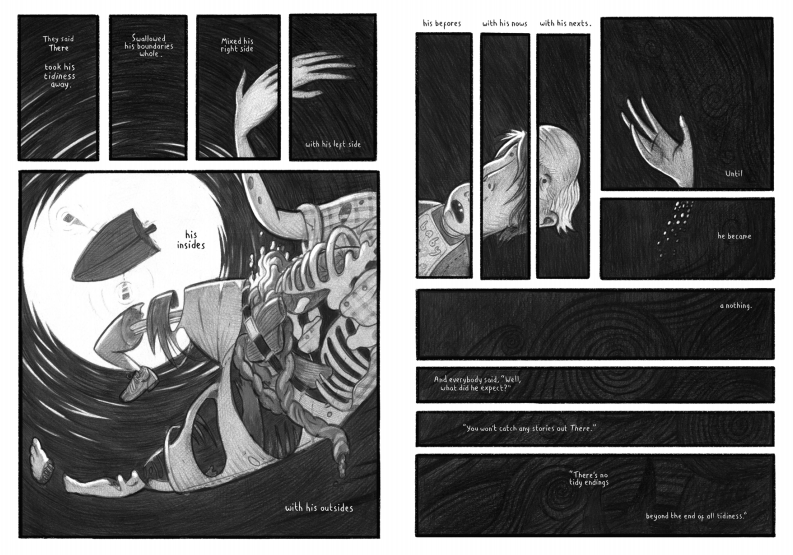Comics: they begin with a box, a dot, a letter, an idea.
An underappreciated, vital medium, comics have slipped under the radar for most Australians who appreciate art. Comic Tragics, at the Art Gallery of Western Australia (AGWA), features the insightful work of nine highly individual, contemporary artists from around the globe: Gabrielle Bell, Stephen Collins, Aisha Franz, Anders Nilsen, Tommi Parrish, John Porcellino, Ron Regé Jr, Dash Shaw and Emma Talbot. Curated by Robert Cook, this is the first time a government-run arts institution has celebrated the significance of comic art in Australia. Billed as venturing “beyond the superhero to the super personal”, the exhibition considers the complexities of the human condition and life’s spectrum of emotions, as captured through comics.
At the Artist Talks, British artist Emma Talbot recounted an interview in which she had been asked “do you think anyone coming to the exhibition would be disappointed because it’s not funny?” Her reply that the strength of this exhibition is its very honest and layered humanity holds true.
The exhibition is emotionally foregrounded with the black and white work of American artist Anders Nilsen. From his large scale illustrations to 8 pages from his comic Don’t Go Where I Can’t Follow, the variation eases viewers into analysing the humanistic themes in the comic and graphic art. The book Don’t Go Where I Can’t Follow is addressed to Nilsen’s deceased fiancée and shows his experience of releasing her ashes, with friends, in a Chicago lake. Seeing the original working pages with cold white correction fluid, pasted over characters and segments, holds a unique and raw essence that exceeds the reproduced print. It’s invaluable to recognise the intimate process involved in comic making, particularly with such a sentimental, hand drawn story.

In contrast, Stephen Collin’s quirky illustrations from The Guardian newspaper and The Gigantic Beard that Was Evil provide the ‘comic relief’ amongst the tender stories of love and loss in this exhibition. It reminds us that when we’re in a fine arts institution, our experience shouldn’t always have to result in puzzling feelings of sadness or confusion. There can be room for humour in the white cube.
There is a directness that accompanies comic art, as it is able to seamlessly synchronise visuals and text. In a sense, other graphic art forms lack this ability to effectively tell a punchline or a lengthy story without convolution.
Melbourne-raised, Tommi Parrish builds comics from personal diary writing which become universal and stifling life scenarios. Her work offers insights on sexuality and growing identities. I Was Just Trying To Be Alive is an amusing, but relatable, comic that shares existential crisis woes. Being that five out of the nine artists exhibited in Comic Tragics are American, her work highlights the prominence of comics and their invisible artists in Australia.
In the midst of viewing the 150 works in this expansive exhibition, it felt slightly unnatural and disorientating to read such detailed comics in a gallery. Peering at the comic art upright on a wall is just not the same as holding the book itself, flipping each page over at your own pace. Cleverly, the exhibition leads you towards a seated reading table in the centre of the space. Located near a display case of zines, it is a fantastic place to sit and just take in the enormity of Comic Tragics. The table had printed books from all the featured artists, and reminds viewers of the intimate reading experience of comics in their final reproducible form.

Words by Gabby Loo
Comic Tragics: The Exploding Language of Contemporary Comic Art is a free exhibition running at the Art Gallery of Western Australia until 25 July.

